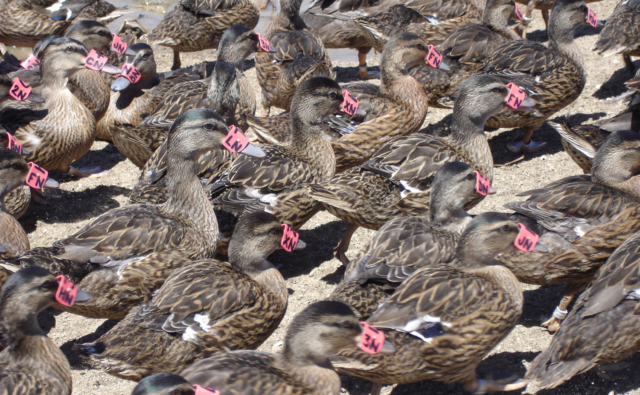
Benjamin Folliot, who completed his PhD thesis with the OFB and Tour du Valat in December 2018, has just published an article in the journal Wildlife Biology on the survival of common Pochard on a European scale (France, Switzerland, United Kingdom).
Analysis of ringing data over several decades suggests that it is not a lower survival of adult females compared to males that has led to the decline of the species, but more likely a problem of reproductive success and/or survival of juveniles.
The survival of adults in France is lower than in Switzerland and the United Kingdom, probably due to higher hunting pressure, but it is not hunting pressure that led to the decline of the species either. However, Benjamin had shown in his PhD thesis that a reduction in the hunting harvest of this species in France, if implemented within the framework of adaptive management, could help to halt the decline.
Abstract:
In western Europe, common pochard populations have experienced a sharp decline over the last two decades, together with an increasing proportion of males. Both of these changes were suggested to result from decreasing survival of nesting females (i.e. survival of adult females) owing to increasing predation pressure. To test this hypothesis, we used capture–mark–recapture/recovery data of common pochard ringed during autumn–winter (October–February) in three countries of western Europe (Switzerland, United Kingdom and France). We found no evidence for decreasing survival of individuals ringed in the United Kingdom or in Switzerland over the long term (1977–2011). In France, adult males and juvenile females experienced significant decreasing survival over a shorter interval (2004–2017). Overall, females displayed lower survival than males, although this was only weakly supported by the French dataset. In contrast, only sex differences and no age differences in survival rates were recorded in the UK and Switzerland (females 0.67 ± 0.03 and 0.69 ± 0.03; males: 0.81 ± 0.01 and 0.75 ± 0.01, respectively), while both age and sex differences were recorded for France (adult females 0.62 ± 0.07, adult males 0.66 ± 0.07, juvenile females 0.49 ± 0.08, juvenile males 0.54 ± 0.08). Therefore, decreasing survival of adult females was unlikely the underlying cause of the decline of common pochard populations in western Europe. Using an age-structured two-sex matrix population model, we show that when adult males experience higher survival than adult females (as it is the case for common pochards), decreasing survival of nests and/or juveniles can trigger decreasing population size and increasing proportions of males at the same time.
Bibliographical reference : Folliot, Benjamin, Guillaume Souchay, Jocelyn Champagnon, Matthieu Guillemain, Maurice Durham, Richard Hearn, Josef Hofer, Jacques Laesser, Christophe Sorin, et Alain Caizergues. When Survival Matters: Is Decreasing Survival Underlying the Decline of Common Pochard in Western Europe? Wildlife Biology, 2020(3)3. https://doi.org/10.2981/wlb.00682

